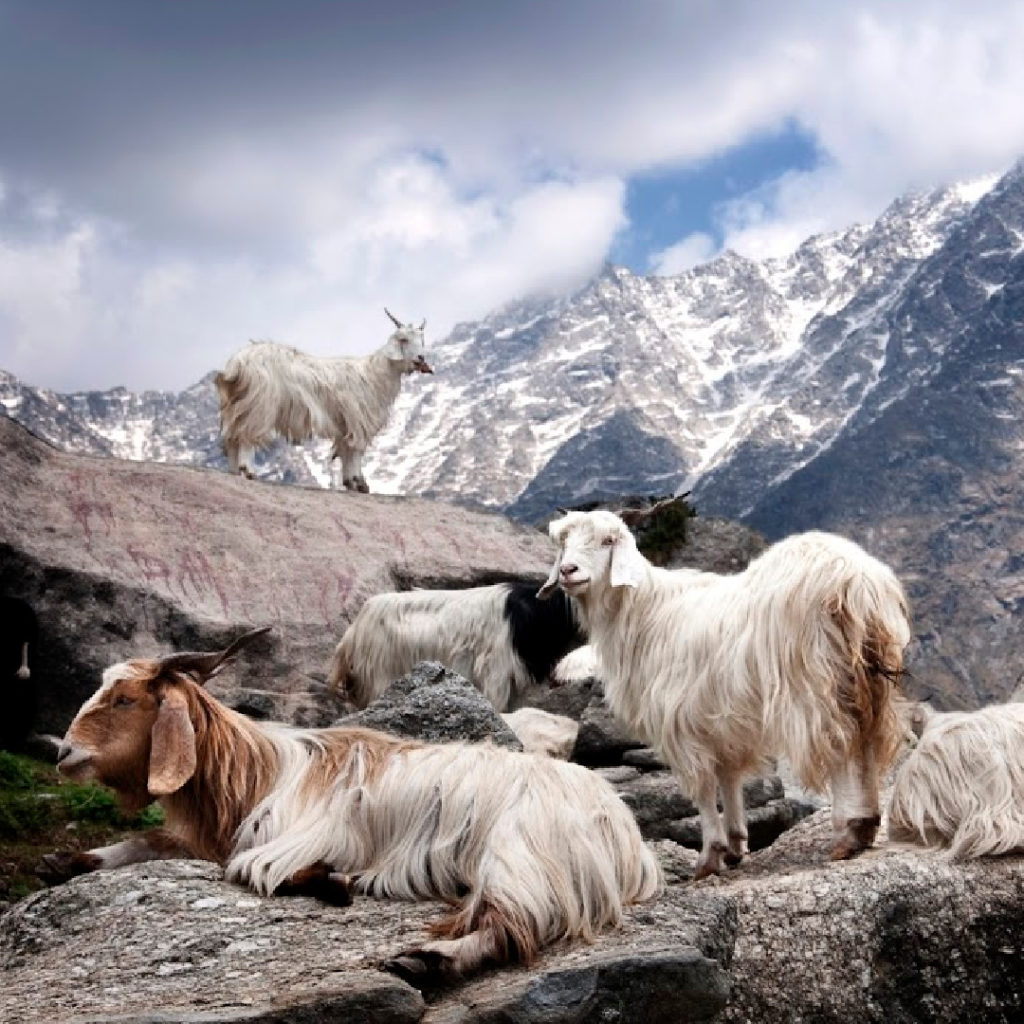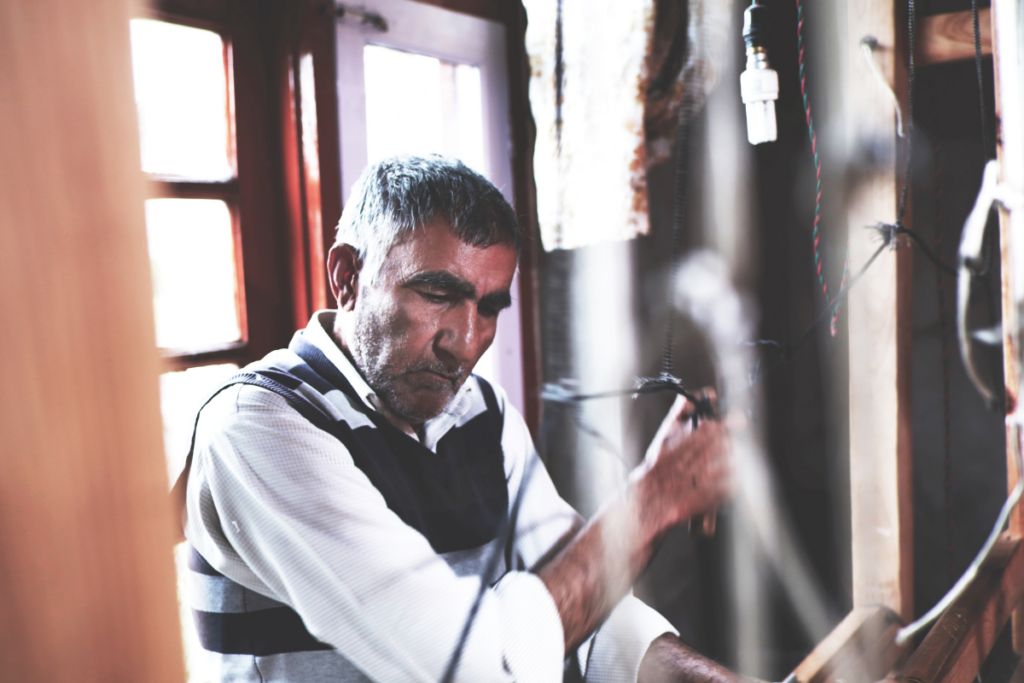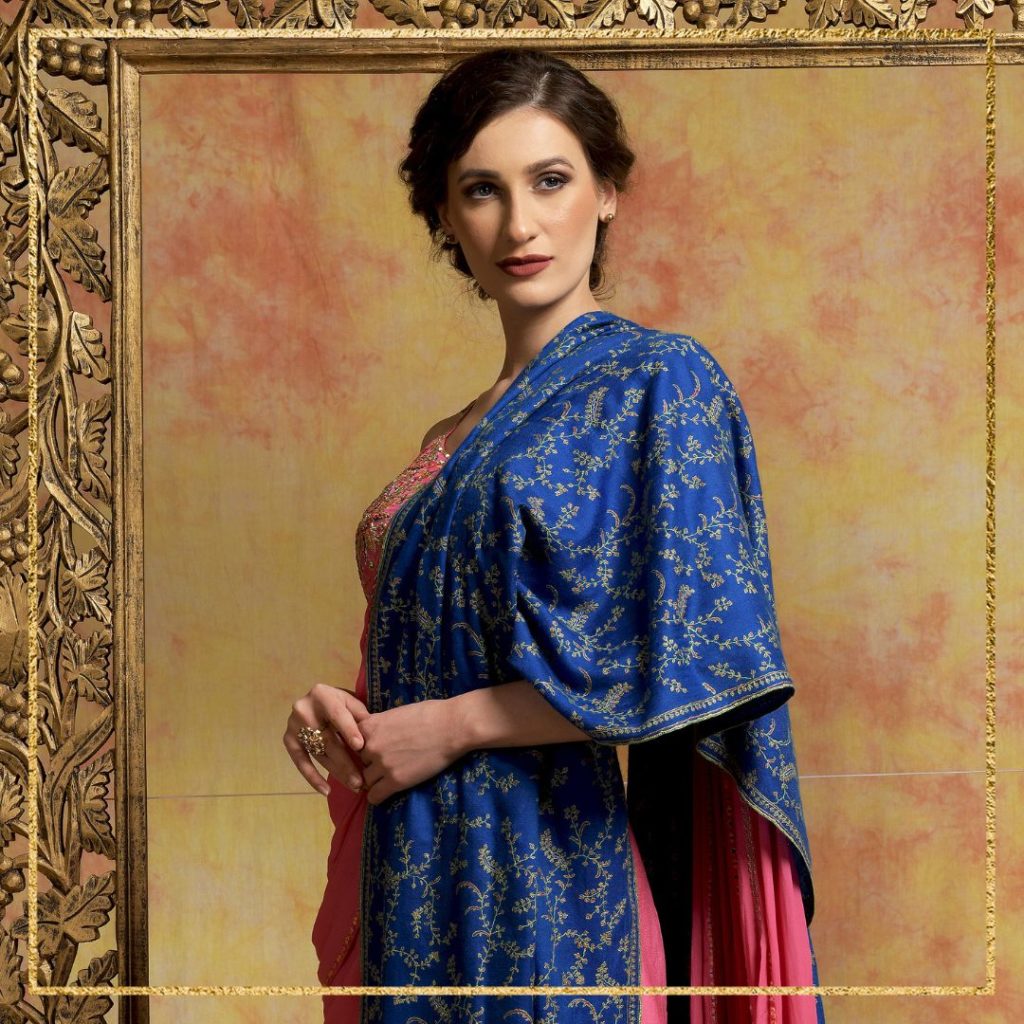We are so excited about this new shopped stuff, but as soon as we use these ‘in-vogue apparel’ or the most ‘trendy accessories’, they wither in just a few months. How utterly disappointing is the fact that clothes do not last, as long as we want them to. Either they become withered within a few months or look immensely shaggy. Where did the old times go when clothing, wraps and accessories lasted for years together? How quickly did slow fashion disappear and pave the way for fast fashion where nothing lasts more than a few weeks? Is there anything in the present times which lasts for a lifetime? There is. Cashmere.
Cashmere lasts for a lifetime. For more than 20 years. For a time we never expected. And it ages like fine wine. It looks graceful when fresh, and heirloom and vintage when old. But why do we not know everything about this exquisite wool type? What is Cashmere, and what is so special about it? Let's find out
What is Cashmere?
Cashmere is the anglicization of the word Kashmir. And Kashmir is a place in North India. What is special about the valley is the production of apparel, wraps, scarves and accessories that have been made out of Cashmere.

Cashmere is a fine animal hair, which grows on the body of Capra Hircus goats. This goat is special because it produces this luxury wool - which is one of the most precious and luxurious animal hairs in the world. This species of goat is found roaming and residing around the Himalayan ranges, and as such many countries produce Cashmere. China and Mongolia are the top producers of this precious wool type. The best quality Cashmere, however, comes from Ladakh. The Ladakhi Capra Hircus goat is the most prized one because the hair it grows is the finest, warmest, softest and the most luxurious too. Ladakhi Cashmere, as such, is considered as the most special quality of this soft gold.
The Changthang area of Ladakh houses the goat of Ladakh. The goat grows fine wool in winter, which it uses as a defence against the harsh winters in the area. But as soon as Spring - its moulting season - arrives, the goat starts shedding the hair naturally. Some portion, which is hard to lose naturally, is combed off by herders using specialised combs. The wool is packed in small packets post a basic cleaning.
Processing Cashmere
The word ‘Cashmere’ comes from ‘Kashmir’ because of its processing, which is done in the Kashmir valley. The valley houses artisans, who have decades of experience in processing. There are hundreds of spinners (women), weavers, embroidery artisans, dyers, cleaners, and more artisans associated with processing. As such, the valley is rich in Cashmere production, especially in the making of Pashmina shawls, which has been the obsession of queens and kings for centuries. Even now, Kashmiri Pashmina shawls have a record of stealing shows sponsored by the biggest brands and belonging to the most famous designers around the world.
How is wool processed into scarves?
Cashmere processing starts with cleaning it again by womenfolk of the valley, who make it seem like the easiest of tasks due to their experience. Post cleaning, raw wool is sent for spinning. Spinning is done on a wooden spinning wheel, to which lumps of wool are attached, and spun with the coordination of the wheel and hand. The coordination is perfect enough to transform lumps of wool to fine fibre of diameter 12 to 16 microns only. The fibre is packed and sent to weavers, who are usually men. The processing is a family affair, and hence, at times, members of the same family perform different activities.

Post Spinning, the fibre needs to be woven. This is done over a handloom, which is again a wooden structure, operated by one or two men. This handloom is centuries old, and Cashmere weaving has been done over these looms for centuries. One or two men fix the fibre over the top of this handloom and start weaving it in sync. This process takes 3 or 4 days for plain Cashmere fabric (or several years if it is a Kani shawl). This is the birth of Cashmere shawls, scarves, wraps, and more.
Cashmere and slow-fashion

While the world knows very few patrons of slow fashion, Cashmere remains one of the biggest representative cases of the same. While some scarves or shawls take a few days to complete, others take a few years, being the perfect example of slow fashion trends. Cashmere scarves and shawls are timeless fashion accessories, and fortunately they age exactly like they are made - Slowly. A Pashmina shawl, made from Ladakhi Cashmere is believed to last for 30 years. In Fact it acquired a vintage, an heirloom look as it ages. A Pashmina shawl made from Cashmere never looks old and withered but ages gracefully. As a matter of fact, women in Kashmir gifted their own Pashmina shawls to their newly wed daughters as souvenirs of their culture.
Also read: WHAT IS PASHMINA WOOL USED FOR?
A word of Caution
Your Cashmere shawl will age gracefully and last for the longest time, only if you take care of it the way it deserves and demands. Cashmere fibre is gentle and hence requires gentle treatment. This includes washing your shawl gently with your hands, using a Cashmere shampoo. Then rinse it with your hands too with gentle movements. Drying a Cashmere is done by rolling it in between two clean and dry towels, and later air drying it. If the shawl needs ironing, it is done by a steam iron.
Storing a Cashmere scarf or shawl needs more caution. The place should be dry, clean and away from direct sunlight. It should be free from moisture and hence moths that can damage its delicate fibre. Cashmere should be worn carefully, and should be prevented from much friction. Friction can cause pilling, and piling can make a new shawl withered.
One should always invest in pure Cashmere scarves, wraps or shawl. Buying these precious things from authentic sellers is a must. This way your shawl will be your companion for an entire lifetime.